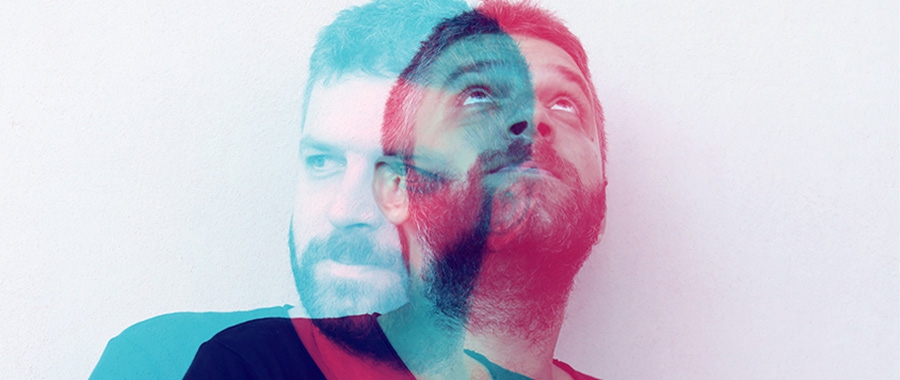The views expressed in our content reflect individual perspectives and do not represent the authoritative views of the Baha'i Faith.
The highly acclaimed AMC TV show Breaking Bad deftly explains how the Baha’i teachings view the human ego as the devil.
But first, a few disclaimers: I am no expert on the ego, the devil, religious history or Breaking Bad. I am, however, passionate about films, the history of religions and storytelling in general. Also, reading this essay means you’ll encounter spoilers to this critically acclaimed show.
A few years ago, as I explored and learned about the Baha’i Faith prior to my becoming a Baha’i, I happened to be watching Breaking Bad, a new TV series at the time. This coincidence reinforced the Baha’i teaching that the devil is not an external force or being but rather an internal symbol:
As long as man is a captive of habit, pursuing the dictates of self and desire, he is vanquished and defeated. This passionate personal ego takes the reins from his hands, crowds out the qualities of the divine ego and changes him into an animal, a creature unable to judge good from evil, or to distinguish light from darkness. – Abdu’l-Baha, Divine Philosophy, p. 133.
Breaking Bad shows us how an unconstrained, passionate personal ego can lead to disastrous results.
First, what do we mean when we talk about the ego? Merriam-Webster’s Dictionary defines it as “self-importance” or “self-worth.” The Baha’i teachings see it this way:
God has created all in His image and likeness. Shall we manifest hatred for His creatures and servants? This would be contrary to the will of God and according to the will of Satan, by which we mean the natural inclinations of the lower nature. This lower nature in man is symbolized as Satan—the evil ego within us, not an evil personality outside. – Abdu’l-Baha, The Promulgation of Universal Peace, p. 286.
The Symbol of Satan
So who is “Satan,” and where did the idea of an evil being come from? In Hinduism, no such single deity exists, because all of the gods themselves have good and bad sides, which together explain the evils of life without the need for just one deity to instigate all suffering.
In Buddhism, a devil-like figure called Mara tempts and distracts humans from practicing the spiritual life by making the mundane alluring or the negative seem positive.
In Zoroastrianism, a being known as Ahriman has dual sides: both truth and lies, symbolizing an inner force that has to decide between good thoughts, good words, and good deeds and evil thoughts, evil words and evil deeds.
In mainstream Christianity, the devil is usually named Satan. In Hebrew, Satan is a term meaning “adversary,” or “enemy.” Some modern Christians consider the devil to be an angel who rebelled against God and has consequently been condemned to the Lake of Fire. He opposes God, spreading lies and wreaking havoc on the souls of mankind.
In Islam the equivalent of Satan is Shaitan, the evil force that can be used to describe any barrier oropposition to God, no matter its intention. The Qur’an says that Shaitan was among the angels whom God ordered to bow down to Adam after his creation. Shaitan thought he was better than any other creature, and thus God’s favorite. When God created Adam and ordered the angels to bow down to him, it was a blow to Shaitan’s pride. While all the angels obeyed God, Shaitan disobeyed haughtily saying: “I am better than him. You created me from fire and created him from clay.” – Qur’an 38:76. Consequently, God expelled Shaitan from Heaven, with the latter promising to lure mankind into disbelief and evil as an act of revenge from their father Adam.
For Baha’is, Satan represents humanity’s own lower nature and demanding ego,which distracts us from knowing God. Baha’is do not see Satan as an independent being, but as a symbol. The terms Satan or devil do appear in the Baha’i writings, used as metaphors for the base nature of man.
We human beings have free will, and can turn towards God to develop spiritual qualities, or turn away from God and become immersed in our self-centered desires. The Baha’i writings also state that the devil is simply a metaphor for the “insistent self” or “lower self”—those self-serving inclinations within each individual.
Walter White, the Devil, and Breaking Bad
So with all of this history, what does Satan have to do with Breaking Bad? Without giving too much away, the show focuses on Walter White, a brilliant chemist turned high school teacher who finds out he has lung cancer. To save money for his family and pay his medical bills, he decides to cook crystal meth and sell it through an old high school student of his. Of course, this all does not go smoothly, and many people get hurt.
Walt justifies his actions by saying he doesn’t want to leave his family with debt. Throughout the six seasons of the series, Walt keeps saying he does this all to give his family financial security. However, in the process, he not only provides a deadly drug to many people, which tears their own families apart, but he also puts his loved ones in grave danger.
Walt’s ego gets in the way when his teenage son tries to raise money for his father’s medical bills. Instead of being touched or proud of his son trying to help the family, his ego is bruised, and considers his son’s actions as begging and insulting..
Throughout the show, we learn that the Drug Enforcement Administration and many others have concluded that the chemist they’re chasing is actually extremely talented, and could have helped many people instead of destroying them.
Breaking Bad, in each of its six seasons, shows the levels of those ego-driven dangers. When it starts, all Walt needs is to make enough money for his cancer treatments—but he ultimately goes on to make $80+ million. Despite the money, nothing really ends well. In the final episode, Walt finally admits why he did it all: he acknowledges that his unchecked ego took control.
















Comments
Sign in or create an account
Continue with Googleor